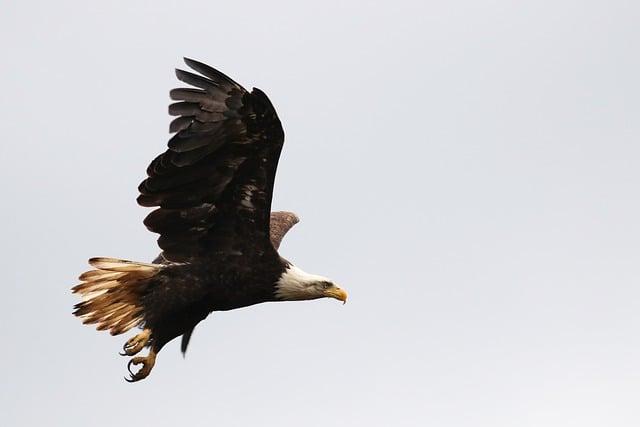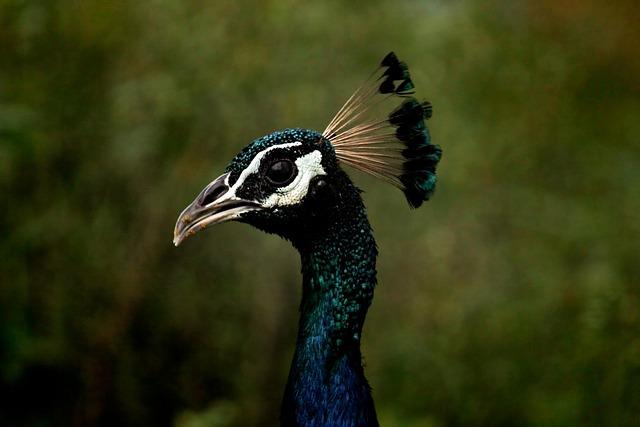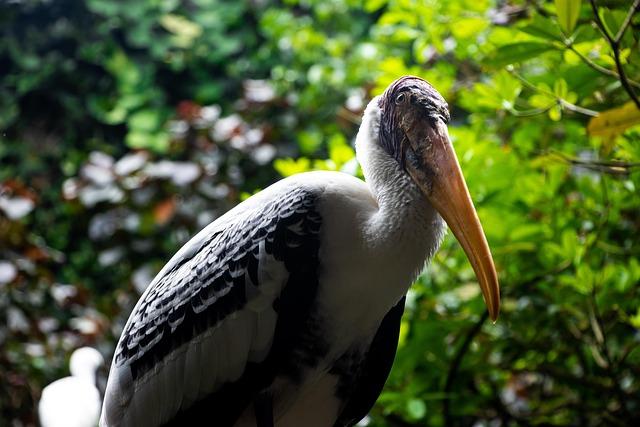In a outstanding flip of occasions, ornithologists and chook fanatics alike were captivated by way of the surprising reappearance of a unprecedented avian species in madagascar, a sighting that has eluded researchers for an astounding 24 years. The elusive chook, recognized scientifically for its distinctive traits and restricted habitat, was once closing documented just about 1 / 4 of a century in the past, main too fears that it is going to have disappeared from the island country eternally. This fresh sighting no longer simplest ignites hope for conservationists but additionally highlights the significance of shielding Madagascar’s wealthy biodiversity, which is house to a plethora of endemic species. As scientists race to collect extra knowledge in this rediscovered avian treasure, the development underscores each the demanding situations and triumphs of natural world conservation in one of the most international’s maximum ecologically distinctive areas.
Resurgence of the Uncommon Chicken Sparks Conservation Pastime in Madagascar
The surprising reappearance of a prior to now misplaced avian species in Madagascar has reignited passion in conservation efforts around the island. For years, this uncommon chook, as soon as thoght to be extinct, had eluded researchers and birdwatchers alike, making its resurgence a vital tournament for conservationists. The scoop has spurred quite a lot of natural world organizations and native communities to acknowledge the significance of safeguarding Madagascar’s distinctive biodiversity, which contains a large number of endemic species that face threats from habitat destruction and local weather trade. To successfully reply to this construction, many have taken to enforcing strategic conservation projects, specializing in enduring land-use practices and habitat recovery.
Bearing in mind this tournament, key stakeholders have come in combination to speak about among the best strategies for conserving the ecosystem that helps no longer simply this uncommon chook but additionally many different species in peril. Their collaborative conversation highlights a number of focal issues:
- Group Involvement: Attractive native populations in conservation efforts to foster a way of possession.
- Analysis Investment: Expanding monetary make stronger for research excited by prone species in Madagascar.
- Consciousness Campaigns: Launching instructional methods concerning the significance of biodiversity and conservation.
| Conservation Technique | Description | Standing |
|---|---|---|
| Habitat Coverage | Organising secure spaces to safeguard vital habitats. | Ongoing |
| Species Tracking | Common exams of chook inhabitants and well being. | Deliberate |
| Group Techniques | Development native capability for conservation thru training. | In Growth |
Biologists analyze the Implications of the Uncommon Chicken’s Look

researchers are humming with pleasure as they delve into the importance of the uncommon chook noticed in Madagascar after its lengthy disappearance. This nicknamed “ghost of the wooded area,” which has eluded scientists since its closing showed sighting in 1999, is prompting a reevaluation of its habitat and conservation standing. Professionals are specializing in the next vital implications:
- Ecological Function: The chook’s doable contribution to the ecosystem might supply insights into the well being of Madagascar’s distinctive biodiversity.
- Genetic Variety: The re-emergence of this uncommon species might point out a broader spectrum of genetic variation that would receive advantages long run conservation efforts.
- Tourism Doable: Its go back may just bolster native tourism, highlighting the will for sustainable measures to offer protection to its habitat.
Moreover, research are being initiated to evaluate the standards that can have contributed to the chook’s reappearance.Researchers are specifically taken with environmental adjustments, together with deforestation and local weather shifts, that can have impacted the species’ survival through the years. The next knowledge is especially compelling:
| 12 months | Sighting Standing | Estimated inhabitants |
|---|---|---|
| 1999 | Final Sighting | Unknown |
| 2023 | Showed Sighting | Approx. 50 |
As biologists proceed to analyze the ramifications of this rediscovery, there may be optimism that it is going to pressure renewed conservation projects in Madagascar. The reappearance may just function a a very powerful reminder of the sophisticated stability of ecosystems and the continuing adventure to offer protection to the wealthy and numerous existence paperwork that inhabit our planet.
Monitoring Tactics: How Fashionable Science Aids in Chicken Conservation

The resurgence of a unprecedented chook species in Madagascar is a testomony to the superb developments in avian monitoring ways that experience revolutionized chook conservation efforts. Fashionable science employs quite a few observe chook populations, permitting researchers to collect vital knowledge about migratory patterns, breeding behavior, and habitat personal tastes. One of the crucial best ways come with:
- GPS Monitoring: Using GPS units, researchers can acquire real-time location knowledge, serving to to know migratory routes and seasonal behaviors.
- Radio Telemetry: This system comes to attaching a light-weight transmitter to the chook, enabling scientists to trace their actions over huge distances.
- Digicam Traps: Positioned strategically inside of habitats, those units seize pictures or movies of birds, offering insights into their actions with out human interference.
- citizen Science Tasks: Attractive the general public in knowledge assortment lets in for a broader achieve and stimulates network passion in conservation efforts.
Moreover, the mixing of information analytics and system studying is improving the best way researchers interpret the huge quantities of knowledge accumulated. As an example, by way of examining spatial knowledge, scientists can determine vital habitats that require preservation or recovery.The next desk illustrates some key metrics related to recent chook conservation methods:
| Methodology | Information Accrued | have an effect on on Conservation |
|---|---|---|
| GPS monitoring | Migration paths, stopover issues | Identifies vital migratory zones |
| Radio Telemetry | Motion conduct, habitat use | Informs habitat control methods |
| Digicam Traps | Behavioral patterns, species interplay | Helps biodiversity tracking |
| Citizen Science | Inhabitants sightings, nesting knowledge | Complements network engagement |
Demanding situations Forward: conserving the Habitat of the Resurfaced Species

The rediscovery of the uncommon chook in Madagascar marks a vital second,however it additionally highlights the urgent demanding situations that lie forward in keeping the original habitats that make stronger its survival. Because the environmental stipulations proceed to shift, a large number of things threaten the sophisticated ecosystems the place this species is living. Key demanding situations come with:
- Deforestation: Speedy land clearing for agriculture and concrete construction disrupts the herbal habitats required for the chook’s sustenance and breeding.
- Local weather Alternate: Altered climate patterns may end up in adjustments in meals availability and nesting stipulations.
- Invasive Species: Non-native crops and animals can outcompete indigenous species, degrading the ecosystem.
- Air pollution: Greater use of insecticides and chemical substances in agriculture impacts the well being of native wildlife.
Efforts to mitigate those threats will have to be multifaceted, involving local communities, conservation organizations, and governmental our bodies. Answers must prioritize sustainable practices that give protection to the habitat whilst supporting the livelihoods of those that inhabit those areas. Vital steps towards this function may just come with:
| Motion | Description |
|---|---|
| Reforestation | Planting local timber to revive misplaced habitats and fortify biodiversity. |
| Group Training | Elevating consciousness concerning the significance of keeping endemic species and their habitats. |
| Coverage Construction | Enforcing rules to curb land construction that threatens natural world habitats. |

Attractive native communities in natural world coverage efforts has turn into increasingly more crucial, specifically in spaces the place endangered species, just like the not too long ago rediscovered chook in madagascar, live. Native citizens possess priceless wisdom concerning the ecosystems and the demanding situations they face. Via fostering partnerships between conservation organizations and network contributors, we will create a sustainable way to natural world preservation. Some methods come with:
- Organizing network workshops to lift consciousness concerning the significance of biodiversity.
- Offering coaching for locals in eco-tourism, developing financial incentives to offer protection to quite than exploit herbal sources.
- Enforcing community-based tracking methods to stay observe of natural world populations and habitats.
Additionally, when locals are actively curious about conservation projects, they turn into stakeholders within the good fortune of natural world coverage. This results in a way of possession and pleasure of their herbal heritage. Key advantages of network involvement come with:
- Enhanced reporting of unlawful natural world actions, supported by way of native wisdom.
- More potent advocacy for environmental insurance policies that replicate network values.
- Promotion of cultural practices that align with conservation objectives, making sure that natural world preservation is built-in into day-to-day existence.
| Receive advantages | Description |
|---|---|
| Advanced Tracking | Communities can give steady commentary of native natural world. |
| Financial Incentives | Extra jobs in eco-tourism result in much less reliance on damaging practices. |
| cultural Integration | The use of native traditions to advertise conservation complements network bonds. |
Long term Analysis Instructions: What We Can Be told from the Rediscovery

The new rediscovery of a unprecedented chook species in Madagascar serves as a poignant reminder of the gaps in our wisdom referring to biodiversity and conservation. This surprising resurgence opens avenues for additional analysis that may deepen our figuring out of the species’ ecological necessities, breeding behavior, and habitat wishes. Doable long run analysis instructions come with:
- Inhabitants Dynamics: Investigating the standards that give a contribution to inhabitants fluctuations and survival charges.
- Habitat Personal tastes: Assessing the kinds of environments that make stronger thriving populations.
- predation and Festival: Exploring interactions with different species that may have an effect on its survival.
- Local weather Adaptation: Learning how environmental adjustments historically have an effect on this species and an identical avian dwellers.
A collaborative approach involving local communities, conservationists, and world researchers can maximize the have an effect on of those research. Insights received from fieldwork and commentary can tell conservation methods and policy-making at quite a lot of ranges.The desk underneath illustrates doable analysis methodologies and their anticipated results:
| Analysis Method | Anticipated Consequence |
|---|---|
| Box Surveys | Information on inhabitants measurement and distribution |
| Genetic Research | Figuring out genetic variety and well being |
| Far flung Sensing | Figuring out habitat viability and adjustments over the years |
| Group Engagement | Bettering native stewardship and coverage efforts |
Ultimate Ideas
the outstanding reappearance of the elusive Madagascar ibis, a chook untraceable for just about 1 / 4 of a century, provides a glimmer of hope for conservationists and ornithologists alike. This surprising resurgence underscores the significance of shielding Madagascar’s distinctive ecosystems, which might be house to a large number of endemic species going through existential threats. As researchers proceed to check this uncommon avian surprise, efforts to preserve its habitat and make sure its long-term survival are extra a very powerful than ever. the rediscovery serves as a reminder of nature’s resilience and the continuing want for vigilance in natural world conservation. The sector watches with bated breath as the tale of the Madagascar ibis unfolds, hoping it marks the start of a brand new bankruptcy for this outstanding species.
Source link : https://afric.news/2025/03/24/untraceable-for-24-years-a-rare-bird-resurfaces-in-madagascar-africanews-english/
Creator : Atticus Reed
Post date : 2025-03-24 14:32:00
Copyright for syndicated content material belongs to the related Source.



